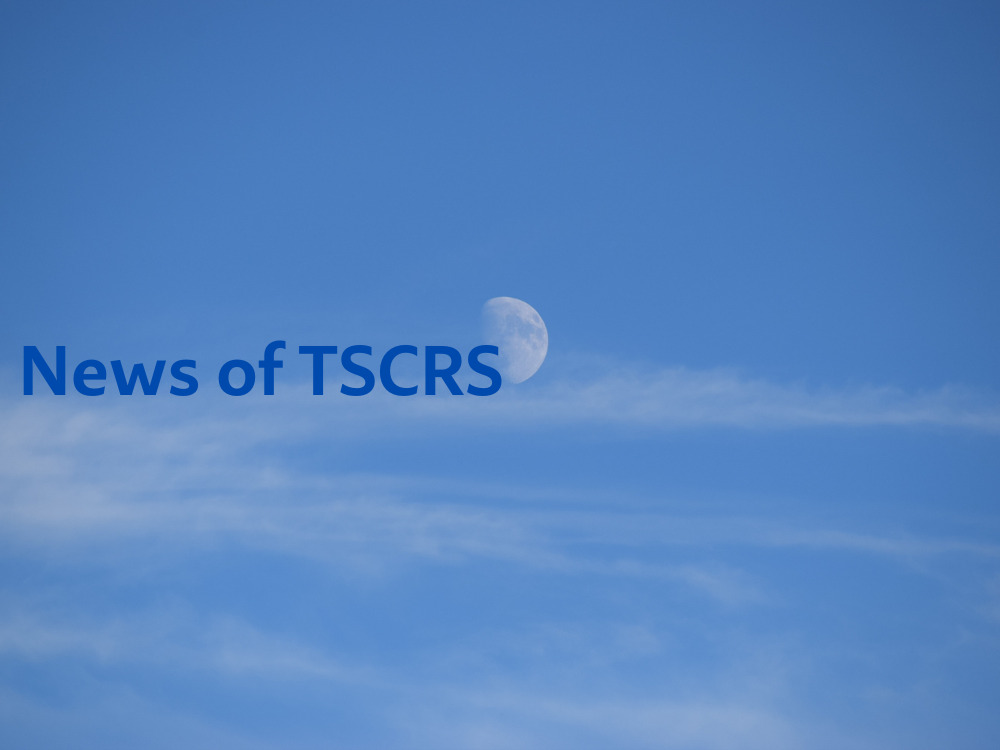TSCRS Chairperson, Dr. Chi-Chin Sun Shares Thoughts on Attending ESCRS 2022 Annual Congress.
– ESCRS in Milan
The European Society of Cataract and Refractive Surgeons (ESCRS) was founded in 1991 to promote education and research in cataract and refractive surgery. Currently, it has over 7,500 members worldwide. As an important annual ophthalmology event in Europe, ESCRS invites the world’s leading ophthalmologists and scientists to give lectures and presentations, organizes symposia to explore the latest directions for treatments, or holds instruction courses that engage in in-depth discussions. The annual congress contains a wide variety of subjects, attracting thousands of ophthalmologists and medical device manufacturers. Wet labs were also held this year, providing a great hands-on opportunity for both young doctors and those wishing to learn new techniques. Last but not least, I have had the opportunity to interact with many renowned ophthalmologists and scientists from all over the world. Learning from each other always gives me endless inspiration and encourages me to move forward in my academic research.
– Wet Lab and Surgical Simulator
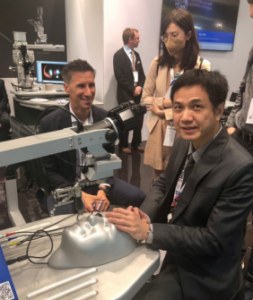
Attending Johnson & Johnson ELITA wet lab was a great opportunity to learn about developments and trends of the latest equipment and refractive surgery. On the other hand, the development of surgical simulators is even more exciting. In addition to high fidelity, they also allow users to select different levels of difficulty which contain refined classification, and manage simulated complications. They are certainly a tremendous help for learning surgeons. Therefore, it is something we plan to introduce in Taiwan in the future to help surgeons gain skills and experience so as to increase the success rate and the number of surgeries.
-Establish Network for Interaction with Scholars Worldwide
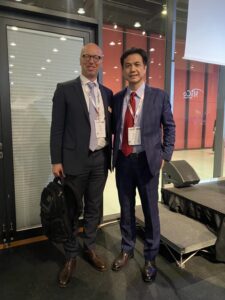
Photo with the current President of ESCRS, Prof. Oliver Findl, at the ESCRS Annual Congress. Networking and establishing collaborations with world-renowned ophthalmologists was one of the goals of the trip. Professor Oliver Findl is the President of ESCRS. His main research interests are optical biometry and pathogenesis of myopia. In addition to congratulating Professor Findl on the success of the event, I had also invited ESCRS to attend TSCRS Annual Meeting in Taiwan. They responded favorably that they would be willing to participate by representing the ESCRS Academy next year, which is very exciting. Professor Findl also mentioned that similar events had been held in China in the past, but the attendance was sluggish. As such, he hopes the event in Taiwan would receive much support and participation.
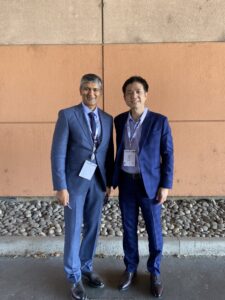
Photo with Prof. Sri Ganesh. Professor Sri Ganesh is a board member of the Asia-Pacific Association of Cataract and Refractive Surgeons (APACRS). He is also a very active member in the All India Ophthalmological Society. Prof. Sri Ganesh has excellent surgical skills, and is keen to share new surgical advances. He was invited to share his clinical experience in 3D cataract surgery at this year’s TSCRS Annual Meeting. To persuade his patients to undergo refractive surgery, he received presbyopic laser surgery himself. He is truly a role model in practicing what he preaches.
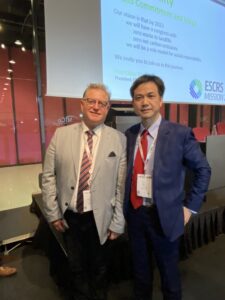
Photo with Prof. Gerd Auffarth. Professor Gerd Auffarth is a board member of the European Society of Cataract and Refractive Surgeons (ESCRS). He has been a long-standing Secretary General of the German Society of Cataract and Refractive Surgery (DGII). With a passion for research and teaching, his lecture was fun and interesting. This year, he was invited to give a talk at the TSCRS Annual Meeting on what to look out for in a cataract surgery. His lecture was very impressive and memorable.
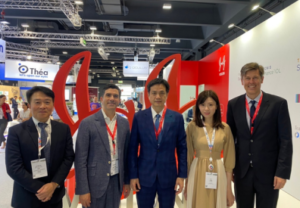
Photo with Peter(second from left), Johnson & Johnson Worldwide President, discussing how the company can fully collaborate with TSCRS in clinical research, teaching training, and academic development.
-E-POSTER
Comparison of visual outcomes among six presbyopia-correcting intraocular lenses after cataract surgery
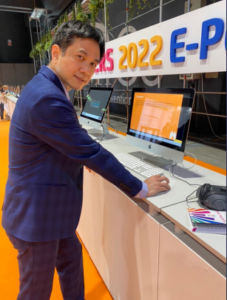
The paper submitted this year compares the prognosis of six types of presbyopia-correcting intraocular lens (IOL) used in a clinical trial. A total of 263 patients were enrolled and they received the above-mentioned IOL implant. No significant difference was found between the six groups of patients with corrected and uncorrected distance vision. However, the extended depth of focus intraocular lens (ZXROO) provided the best middle-distance vision and contrast sensitivity, while PanOptix panfocal intraocular lens provided better near vision. This study will help clinicians select the most appropriate lens for their patients based on their needs.
– Future Prospects
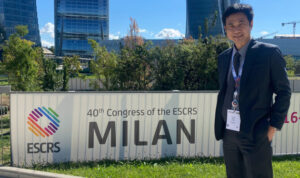
Attending international conferences has always been a source of inspiration for me, as I get to see many talented doctors from around the world shining on the international stage. In addition to absorbing new knowledge, it is more important to understand that Taiwan needs to work harder to keep up with the international community and technological developments. In addition to clinical work, we must work hard to contribute to the world. It is only through constant research and publication that we can gain recognition and acknowledgment in the academic field. As such, this will be one of the goals and directions when I endeavor to train fresh blood. We had the opportunity to personally meet with and invite many internationally renowned ophthalmologists to take part in the TSCRS Annual Meeting in Taiwan. We have received many positive responses, and we look forward to continuously improve TSCRS and benefit more patients in the future! We also look to introduce surgical simulators in Taiwan to help surgeons improve their surgical skills and experience so as to increase the success rate and the number of surgical procedures.

